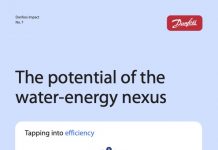Today, the Matched Clean Power Index launches, giving UK consumers the first chance to see exactly how much of their electricity comes from renewables — hour by hour, all year. The index ranks suppliers by the renewable power they actually deliver.
The Index is compiled by independent, not-for-profit energy transparency initiative Matched using publicly available data and a peer-reviewed methodology. It shows consumers what the current rules obscure: suppliers can claim to provide 100% renewable electricity without actually delivering it.
Leading suppliers are already delivering substantial renewable power. The Index’s top performers for 2024-25 match at least two-thirds of their consumption to actual renewable generation. Across domestic and business portfolios, the top five suppliers are:
- Good Energy 88% renewable across 0.4TWh of consumption
- Bryt Energy 78% renewable across 3.4TWh
- Drax Energy 77% renewable across 14.7TWh
- Ecotricity 71% renewable across 1.7TWh
- Octopus 69% renewable across 29.3TWh
Joe Kwiatkowski, founder of Matched and former senior leader at Tesla Energy, said, “The existing rules for renewable claims are broken. If you turned on your heating at 6pm on a January Tuesday, your ‘100% renewable’ supply would probably be powered by gas. Your supplier will have legally bought renewable certificates in the summer when solar power floods the grid, then used them to offset winter power generated from expensive and polluting gas.
“Suppliers are just following the rules, but the market in certificates is worth as much as billion pounds each year and our Index exposes why that’s money badly spent. Simply requiring renewable claims to be aligned with demand would give millions of climate-conscious consumers the confidence that they’re doing the right thing, and recognise leading suppliers who’ve already gone beyond the rules to provide electricity that is genuinely renewable.
“Importantly, these reforms would also help the UK to reach Clean Power 2030 affordably by incentivising the development of clean power where and when it’s needed and reducing use of expensive gas peaking plants.”
Millions of domestic and corporate consumers choose “100% renewable” suppliers or tariffs. But current claims are distorted by decades-old rules allowing non-renewables – including gas-fired generation – to be used during periods of peak demand and then offset by buying Renewable Electricity Guarantee of Origin (REGO) certificates for power generated at completely different times of the year.
This was not an issue when the rules were set back in 2003, when renewables generated less than 3% of UK’s electricity, but it is now. Last year, more than half of the UK’s electricity was renewable for the first time, regularly varying between 5% and 80% of the grid depending on weather and season. Britain’s power prices spike during winter evenings when demand surges and renewable generation drops. During these periods, gas plants fill the gap with expensive energy which drives up wholesale costs and push consumer bills higher. The current rules for renewable energy claims disguise this problem.
Up to a billion pounds a year is spent by suppliers and the customers on REGO certificates to be used in renewable tariffs, but this money is not directed towards the investment in battery storage, demand flexibility, and generation that needs to be available during expensive winter evenings when gas currently fills the gap. Instead, under the current rules renewable certificates are treated equally — whether they represent power generated during cheap, sunny afternoons or scarce, high-demand evenings. With minor changes to the rules, that billion pounds per year could be redirected to reduce our reliance on expensive gas peaking plants and cut the cost of Clean Power 2030.
Joe Kwiatkowski continued, “The best performing suppliers in the Index invest in buying renewable energy that is well aligned with demand hour-by-hour. These suppliers are directing investment toward the flexibility Britain needs. We want energy users to use the platform to help guide which companies they use for their electricity supply and help to drive much needed regulatory change. That would give consumers a better deal; recognise the suppliers who are investing in diverse portfolios of renewables, batteries, and demand response; and drive a cleaner, more cost-effective energy system.”
The Matched methodology also allows for calculations of hourly matching scores specifically for a supplier’s renewable tariffs. For example, So Energy is 50% renewable across all tariffs but, working with Matched, showed that its renewable tariffs – 100% renewable under annual accounting – were 74% renewable across 0.7TWh. Suppliers such as Good Energy and Smartest have gone one step further, by offering hourly matching tariffs to their customers.
Nigel Pocklington, CEO at Good Energy, said, “The Matched index is giving much-needed transparency about the true sources of clean power – which is fundamental to Good Energy’s ethos. We now have a real opportunity to grow public confidence in clean power and this starts with transparency.”
Michael Campbell, Marketing Director at So Energy, said, “So Energy are committed to green energy and welcome the additional transparency that Matched are bringing to this space. We take pride in making sure our customers are well informed as to the different types of renewable generation and are clear what each tariff delivers. We encourage those customers on our green tariff to vote for the source of renewable technology to cover their supply which in turn informs our strategy.”
Consumers and corporations are also demanding greater transparency. The GHG Protocol and Science Based Targets initiative are revising standards in ways that will reshape how every major corporation reports electricity emissions, moving away from annual matching toward hourly accountability.
Killian Daly, Executive Director at EnergyTag says, “Today’s rules let suppliers claim solar at night — that’s absurd. Matched ends that fiction by showing where power really comes from in real-time. It rewards suppliers who keep the lights on with clean power when prices spike, cutting costs and driving gas off the grid.”
Duncan Oswald, Climate Science Lead at Sage, says, “The Matched Index is a key step forward in transparency around sustainability claims. At Sage, we know that SMEs want to become more sustainable but often don’t have the knowledge or know-how to start their net-zero journey. Organisations like Matched provide much-needed awareness but also accurate data that can help SMEs more effectively calculate their carbon footprint — the first step to building a business sustainability plan.”




